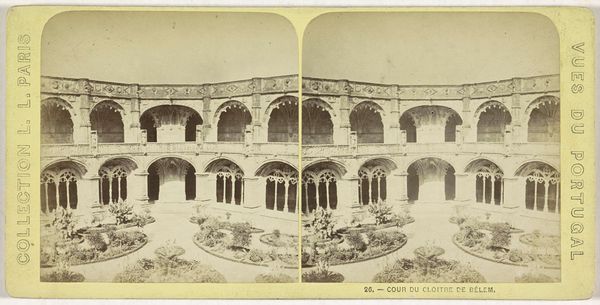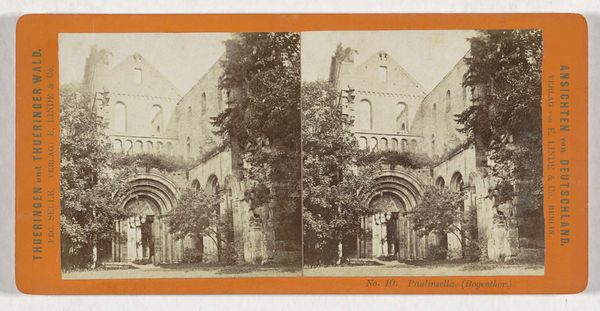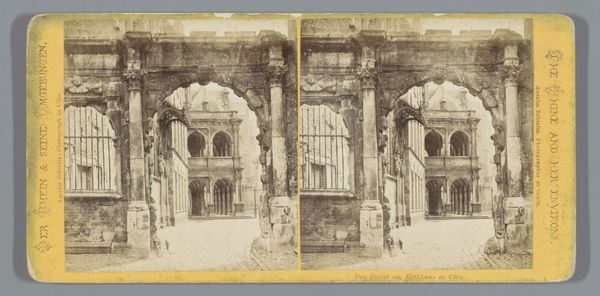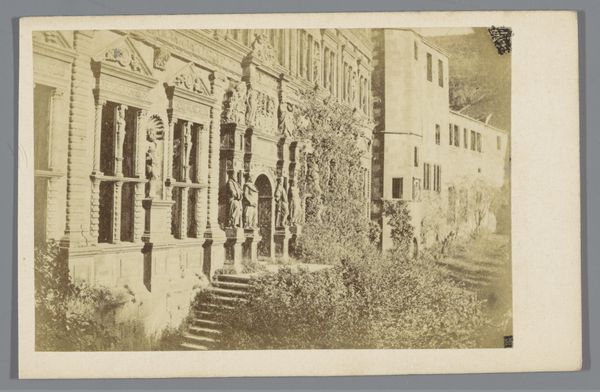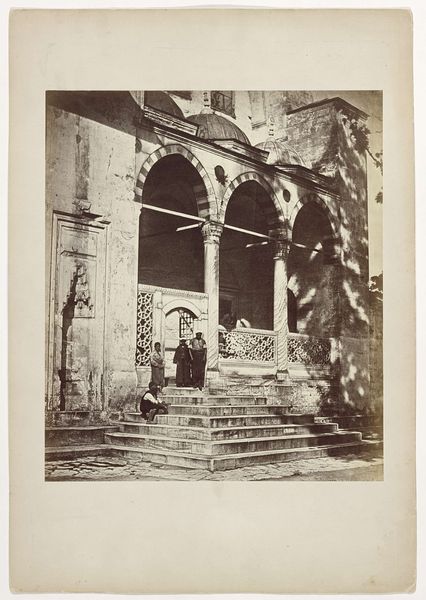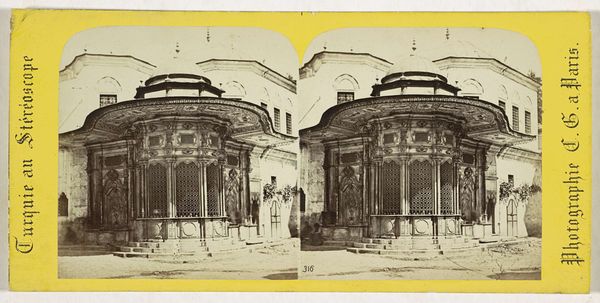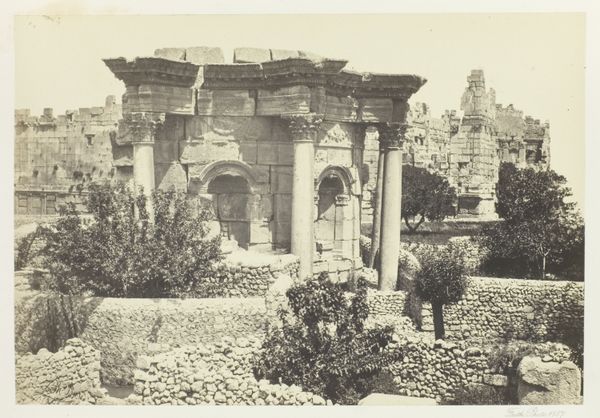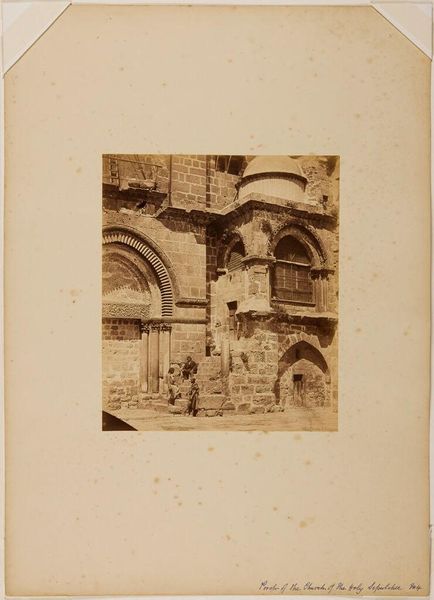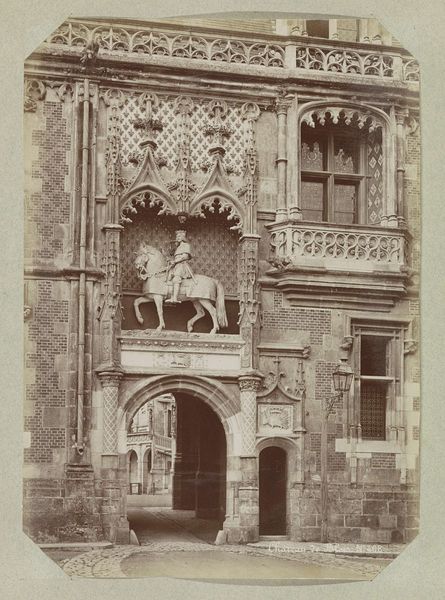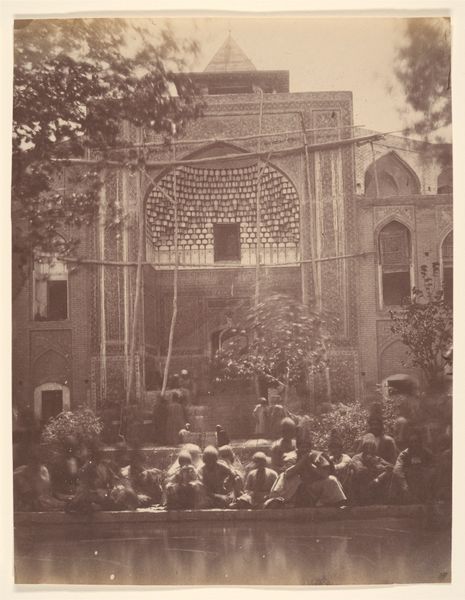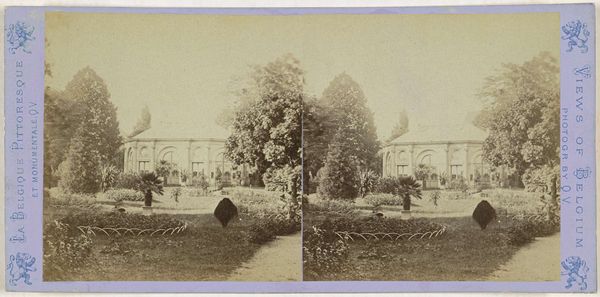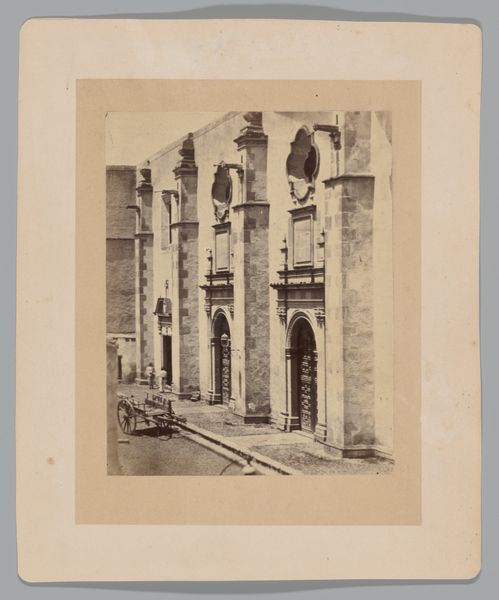
Dimensions: height 86 mm, width 177 mm
Copyright: Rijks Museum: Open Domain
Editor: This is an albumen print photograph from around 1860-1865, titled "Details van het Friedrichshaus in Schloss Heidelberg, Duitsland," by Hippolyte Jouvin. The details are striking, making the texture of the stone and the overgrown foliage quite interesting. How do you interpret the use of architectural detail in this photograph? Curator: The photograph captures Friedrich’s House, but its artistic impact goes much deeper than mere documentation. I see a deliberate layering of symbols within symbols, starting with the romantic-era ruins which themselves evoke narratives of the past, memory, and loss. Editor: Layering of symbols? Can you elaborate? Curator: Look at the figures integrated into the architecture. Jouvin has photographed them almost as if they are emerging from or returning to the stone. The effect invites viewers to meditate on continuity, on how cultural values persist even as civilizations rise and fall. Does the decay amplify these feelings for you? Editor: Yes, the partial decay underscores the temporality of power structures versus the seeming immortality of the values that those structures claim to represent. It’s also fascinating how photography itself, as a relatively new medium, plays into themes of preservation. Curator: Precisely. Jouvin has harnessed photography's unique capacity to arrest moments in time, but at the same time invites the viewer to reflect on longer time spans, where cultural narratives and memory reside. In which ways is this similar to Renaissance painting, where temporality and divinity reside side by side? Editor: It’s surprising how such an old photo resonates even today! Thanks, this gave me a lot to think about in relation to architecture, memory, and symbolism. Curator: My pleasure. Remember, visual symbols evolve over time. Exploring how they have remained can be a fruitful approach when viewing older images.
Comments
No comments
Be the first to comment and join the conversation on the ultimate creative platform.

